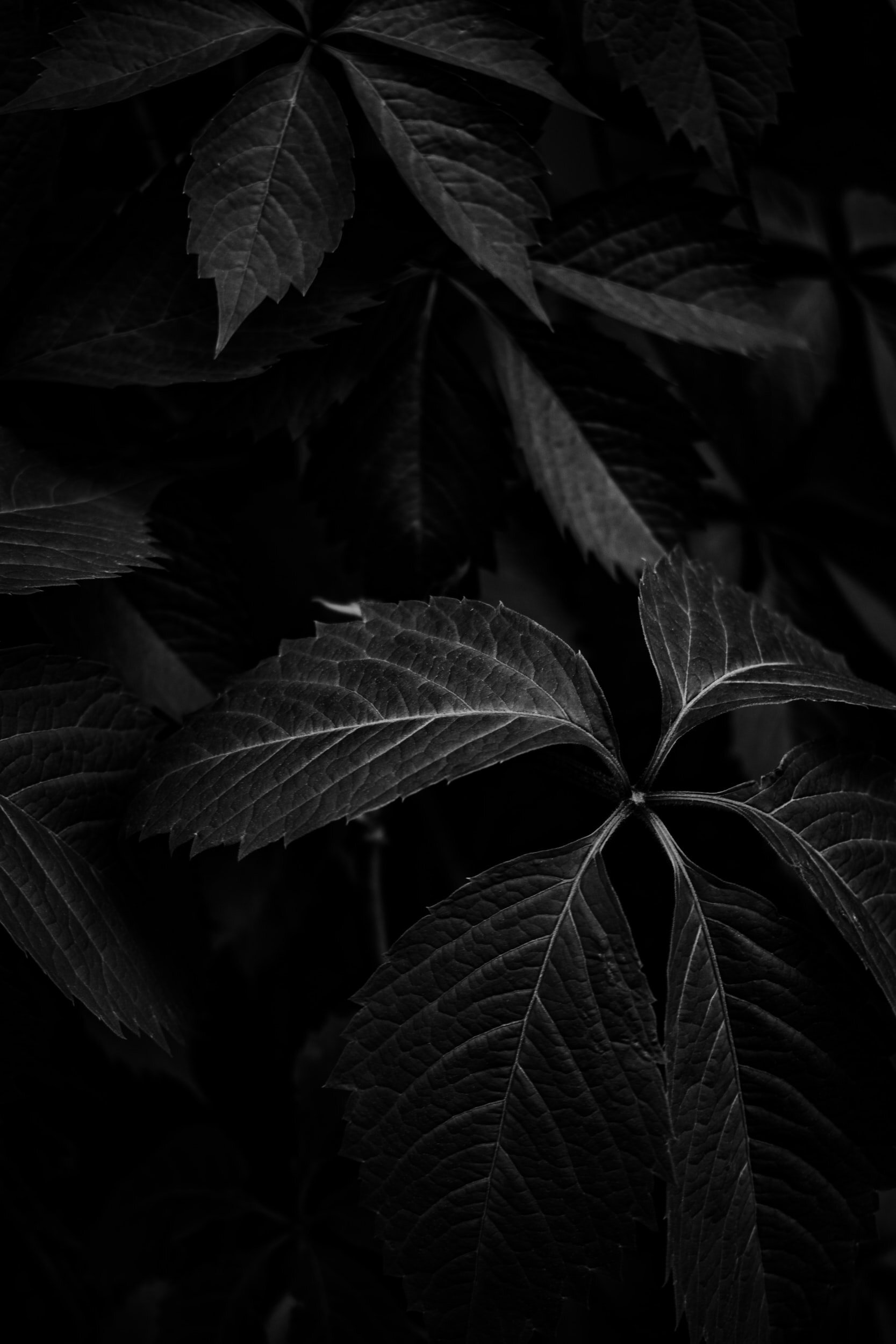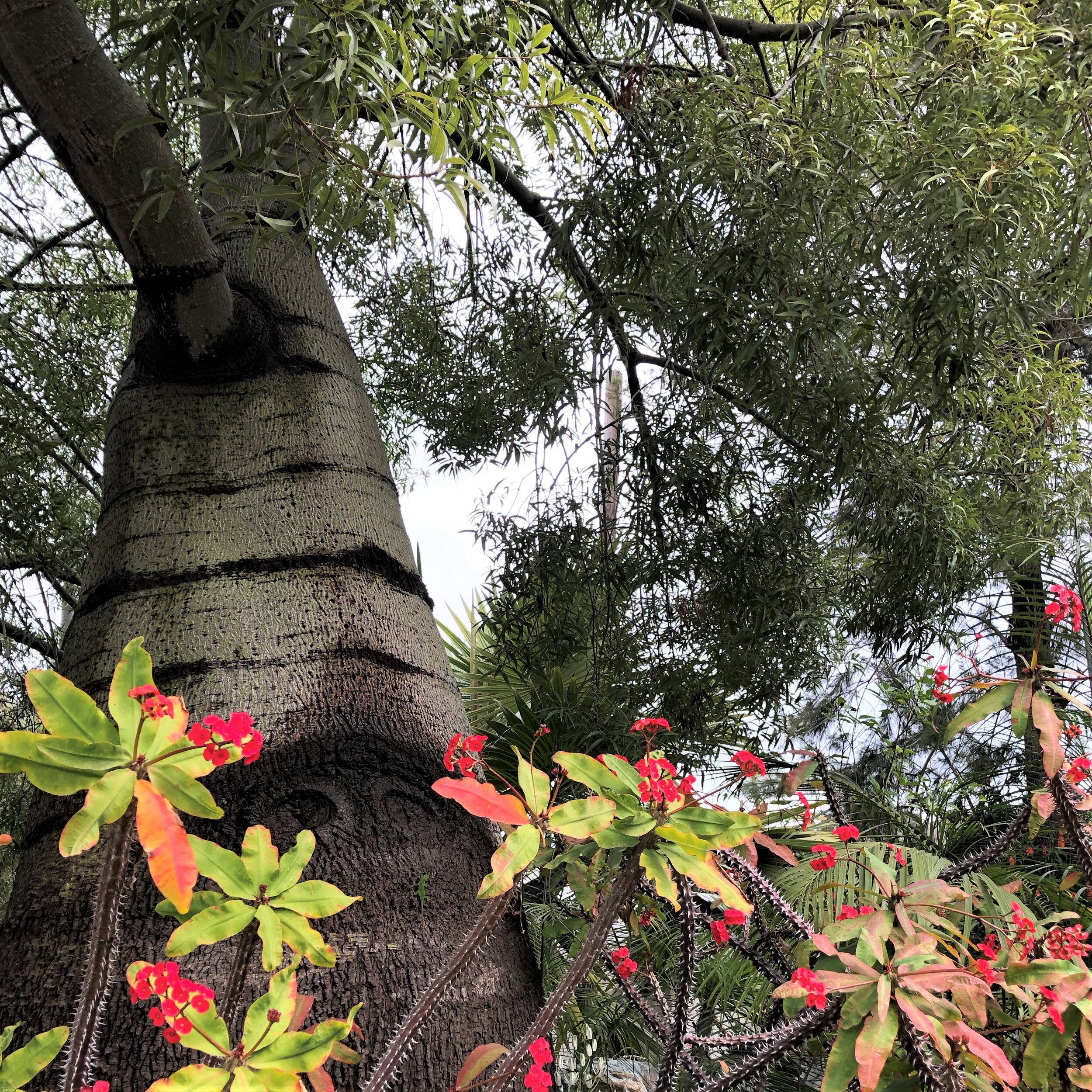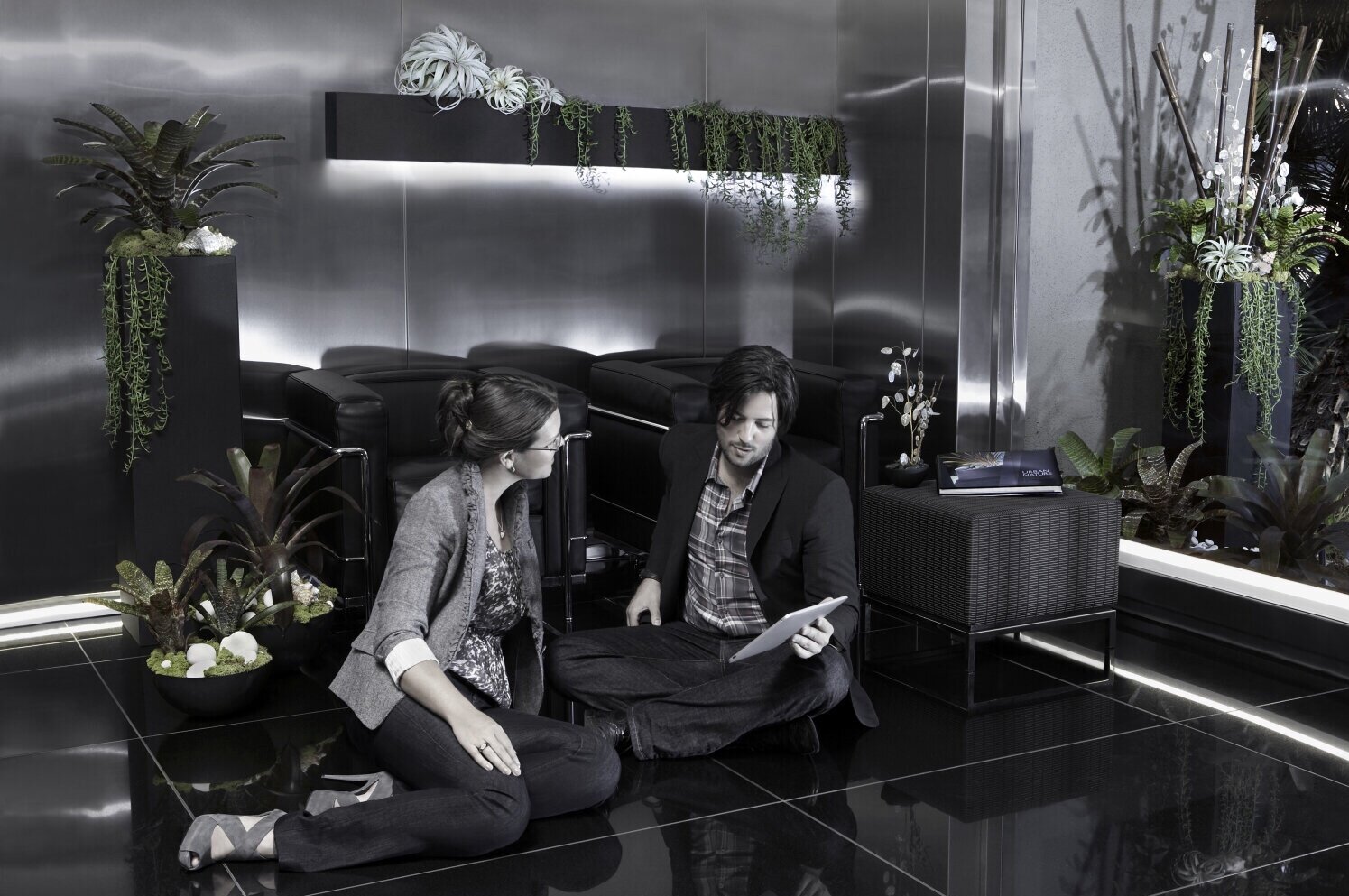
Mona Life is a Purpose Driven Company
When Troy Silva founded Mona Life, it was never about just making money. He just really loved plants, animals, eating, breathing, smiling, making people feel good and living well. To be totally honest, he also had an ulterior motive. He believed and continues to believe that he might just accidentally save the world.

Core Beliefs of Mona Life
1) We believe that humans and non-humans of all shapes, sizes, and varieties are part of a much larger, interconnected system.
Modern people often call that system “Nature” because they perceive this system as functioning outside of or separate from human-made environments. This is simply not true on so many levels. It is a fact, not just a belief, that we are all a part of a great, interconnected world. Like it or not, all individual lifeforms affect other lifeforms in some way. There’s no getting away from that. The harder we try as a species to separate ourselves from the rest of life on earth, the more we put our individual and collective futures at risk.
2) We believe in uplifting others as a way to uplift ourselves. Eploiting others for self gain should never be an option.
We believe that when all beings thrive, we all thrive as individuals. When we think we’re individually better or more deserving than others, our decisions become based in greed rather than good. A life lived only for personal gain is a life filled with loneliness and apathy.
3) We believe that when we give effortlessly by giving something that we have a natural abundance of, we create win-win situations that mutually benefit others and ourselves without risking burnout, guilt, or resentment.
When we live in Regenerative Ecosystems like the ones we help create at Mona Life, caring for others feels effortless or even pleasurable! Most of us are familiar with the phrase, “It’s better to give than to receive.” While this phrase is well intentioned, it seems to miss the point. It implies that giving requires self-sacrifice and that you should feel bad about receiving more than you give. That’s a horrible way to live if you ask us.
The Mona Life Story
To truly understand our purpose, you’ll need to know the story of our founder’s epic life journey. It’s a tale of unbridled imagination, blind optimism, tragic loss, undying resilience, and the wealth of knowledge and wisdom gained from continuing to follow your heart no matter where life takes you.
Chapter One - An Odd Child, Trapped at Home
Once upon a time, there was a strange child named Troy Silva. While other children his age were playing video games, watching cartoons, or hanging out with their friends, Troy was cooking, gardening, and dreaming up ways to escape his life.
By age 10, Troy had a very unusual obsession with aquariums. His idol was not some rock star or superhero, but a Japanese photographer turned aquascaping revolutionary named Takashi Amano. He’d discovered Mr. Amano through an aquarium magazine that he had randomly subscribed to at a school magazine fundraiser.
At the time, Troy could not have explained why he was drawn to the miniature, sculptural, underwater ecosystems that Takashi Amano created, but this infatuation definitely stemmed from his love of the San Diego Zoo. In fact, Troy loved the San Diego Zoo so much, that he had wanted to be a Zookeeper when he grew up.
By age 12, Troy had created and was actively maintaining five diverse aquarium, terrarium, and vivarium habitats. In hindsight, these natural ecosystems had become a mental escape from the boredom, bullies, and unhappy adults that haunted, and motivated, the young dreamer to purse a better life.
Troy never grew out of what his family thought were certainly just childhood hobbies. Instead, he pursued a career in Landscape Architecture with the intention of someday designing habitats for his beloved San Diego Zoo.
Chapter Two - Burning Out, The First Time
Although Troy was now only 28 years old, he was having a midlife crisis. The word burnout was not even in his vocabulary yet, but the ambitious, overachiever was undeniably burnt out. He had completed his first paid landscape design project at 15, gotten the best grades in high school to go to the best college to pursue his dream career in Landscape Architecture to get his dream job designing for the San Diego Zoo.
“How could I possibly be unhappy?” he thought to himself. He’d quickly determined that a Landscape Architecture desk job was not for him during a summer internship, and had started his own Landscape Design Firm, before he’d even graduated from Cornell University.
Since then, he’d built a very impressive portfolio of projects that were designed for very impressive people in very impressive locales, yet somehow all of these accomplishments felt pretty meaningless. He was still driven by his passion for nature and design, not money, but the internal flame that drove his ambition was starting to dim. Troy’s worst nightmare was to lose this light. Without it, he thought he would be worthless and feared that he could actually loose his will to live.
Secretly, he’d always wanted to the next Walt Disney, but until this moment, he’d never questioned WHY he longed to create his version of Disneyland. Deep down inside, he just knew that creating dream worlds was what he was supposed to do with his life. A surge of energy had always rushed through his body whenever he’d think about what he described as a Luxury Experience Park.
During this first encounter with burnout and the resulting existential crisis, he just so happened to be finishing up with his first restaurant design project. He was feeling overworked, underpaid, and underappreciated.
Thankfully, adjacent to the restaurant project, Troy discovered a new passion project. This project immediately turned his dwindling internal flame into a full on wildfire. This wildfire would become the first iteration of MoNA.
Chapter Three - Becoming a Modern Day Robin Hood
Troy was living in Los Angeles, and his clients were all super rich, powerful, and rather eccentric. Having grown up in a struggling, single mom family in a working class, master planned suburbia, Troy always was always told that money did not buy happiness, but he honestly thought this was just something people who didn’t have money told themselves to feel better. He could not have possibly imagined that people who have enough money to literally build their dreams could ever actually feel anything but amazing. By this time in Troy’s life, he’d learned that the wealthy could be even more depressed that the poor. He also learned that many of these ultra-wealthy clients could be really angry and just plain mean!
“How could this be?” he wondered. His conclusion? It must be because they weren’t doing enough with their money to help others! Troy believed he could help them help others. He would use all of the money he was making from these clients and spend it all on creating his new passion project. This project would benefit all of the people in Hollywood who were struggling to pay for their skyrocketing rents, gym memberships, work lunches, and artisanal lattes.
Chapter Four - Saving Hollywood, One Alley at a Time
It would take a team of mental health professionals to figure out what was going on in Troy’s brain at this point. Nevertheless, at this moment in his life, impulsivity and blind optimism always beat out caution and practicality. His vision was just too strong to fight. The original “MoNA” concept, an acronym for Museum of Natural Art, was born and it was going to be his Disneyland…in an alley…in Hollywood?
In hindsight, the idea was beyond eccentric, but at the time, Troy also justified it as a marketing expense and showcase for his new line of premium, modern planters. He reasoned that it would basically be a rent free gallery for his Ecological Sculptures. He would become the street artist of the landscape world, while saving the world through urban revitalization.
The project was a success in many ways. People loved the transformation. It inspired and entertained locals and visitors alike. The only thing it did not do was make money. Even as a non-profit, Troy was not able to solicit the donations that would be needed to continue maintaining, let alone growing this vertical botanical garden. Troy was spending himself into bankruptcy because he just couldn’t let his creation die. Ultimately, however, he had no choice. The first Museum of Natural Art exhibition was written off as a naive, expensive experiment that had no grounding in economic reality.
Chapter Five - The Museum of Natural Art
Dishearten by the failure of the original MoNA in Hollywood, and excited by a new nightclub / beach club project on the Las Vegas Strip, Troy decided to make Las Vegas his full time residence. He’d always been drawn to the city’s ability to make money from the creations of eccentric visionaries like himself. Troy’s work had already caught the attention of one of these visionaries after he’d wowed the nightlife mogul with a dreamy landscape renovation at his Hollywood Hills home.
By this time, Troy had recovered financially from MoNA 1.0 and was eager to do it all over again. Only this time, it would be in a former auto repair shop, a few blocks away from the Strip. He’d developed another furniture collection based on the custom designed pieces he’d created for Drai’s Beach Club, and this space would showcase these unique, sustainable yet glamourous furnishings.
Of course, in true Troy fashion, this second version of The Museum of Natural Art had to be even more innovative. He imagined that it would become an immersive multisensory playground of sorts. It would offer underground, speakeasy-style nightlife and even experiential lodging options.
Once again, MoNA became a hit in terms of it’s popularity and how amazing it made people feel. The Museum of Natural Art was showered with praise and 5-star reviews from all who discovered this secret world. However, Troy had managed to repeat the same mistake by biting off much more than he could chew and allowing MoNA to drain all of his earnings rather than make him money.
After two and a half years, Troy met a woman who came to MoNA and was blown away by the creativity and feeling of the place he’d created. She was also a fellow creative visionary who had a company called Fresh Wata, which specialized in Experiential Marketing. Troy saw a potential business partner and began to collaborate with her as Fresh Wata’s new Director of Mutisensory Experiences.
The woman was also a bit of a real estate investor in the making. She had just purchased her second home, which she’d planned to renovate and rent out. From the very first time that Troy visited this property, he just knew that would become the third iteration of the MoNA concept.
Chapter Six - The Ministry of Natural Alignment
MoNA 3.0 was a private nature sanctuary and wellness center. The mission was to help people connect with nature by learning to live in alignment with the natural world. Unlike past versions of MoNA, the Ministry of Natural Alignment focused on spirituality, philosophy, and a creating a sense of calm through ease.
The Ministry of Natural Alignment offered sustainable cooking classes, free range farm animals, camping, and other transformational retreat-type experiences. The location was designed as a “Nature Farm”. Essentially, the goal was to create a series of biodiverse, largely self sustaining ecosystems from which we could forage and enjoy a simpler way of life.
This place was truly magical. People fell so deeply in love with the place that they wanted to stay forever. In fact, several long term residents did move in. In many ways, the Ministry of Natural Alignment unintentionally became more of an experiment in developing sustainable communities. This beautiful yet painful learning lesson only lasted 3 years, drained Troy of all his remaining savings, yet positively affected thousands during that time.
Chapter Seven - Living The “Mona Life” without a New MoNA Location
After months of battling PTSD, anxiety, and depression, Troy had begun to give up on his dreams. He felt that they had just been delusions that caused him nothing but pain and suffering. He acknowledged that all three MoNAs had helped so many others feel better, but literally had nothing left to give.
But just like it in every good Disney fairytale, is was at this rock bottom that things miraculously would get better right? Surprisingly, as a whole, the answer was yes. Through facing his fear of mediocrity, taking a momentary break from building dream worlds, and getting a “normal job” with a cookie-cutter residential landscape contractor, Troy was able to reflect on his past.
Of course, Troy was still Troy. He couldn’t just sell pavers and fake grass in the suburbs forever. After shattering sales records and working himself sick again, Troy was ready to get back to living the “Mona Life”.
In many ways, not having a new physical location to create a new MoNA yet helped Troy finally slow down and get back to the roots of his passion for nature and design. While rediscovering all of the beautiful hikes and parks in San Diego County, Troy started to realize that MoNA was more of a way of life than a place.
He knew this time he would have take it much slower, keep his overhead, expenses, and obligations low, and focus on his own mental health too. He still wanted to help people create places that helped others, including themselves, feel amazing. He just didn’t want to burn himself out or spend himself into bankruptcy again.
After months of soul searching, Troy founded new Mona Life Organization, as a design and consulting firm that specialized in co-creating more natural living environments. This fourth iteration of MoNA combines Troy’s academic background in Landscape Architecture and Environmental Psychology at Cornell University with the wealth of real world experience gained from his robust portfolio of places that made people feel good.
During Troy’s burnout and depression recovery process, getting help from mental health professionals and talking to friends really helped. Another way that Troy altered his own environment to support his healing was to create his own Regenerative Ecosystem. This colorful, semi-edible, lush, balcony garden, brought joy and calm to Troy’s life, even though he was living in the type of high density environment that often triggered his intense anxiety attacks.
Chapter Eight - Escaping to the Woods
Even though Troy had created a more sustainable life for himself in San Diego, he ultimately surrendered to the fact that his desire to create a new physical MoNA destination would never fade. Like all of the previous MoNA locations, this new location would be very different from the others because it would because it would encompass all of the wisdom gained from the many successes and failures Troy had experienced thus far.
Essentially, this time Troy did not want taking care of the physical location to become his full time job. It needed to be an existing Regenerative Ecosystem, not one that he needed to create from scratch. So, he set out to find a remote slice of heaven where people could escape the city and spend time living in alignment with a natural ecosystem.
He wanted it to be in forest that was rainy enough to feel lush, but not so tropical that it would always feel oppressively humid. He dreamed of it being on a lake, fed by a year round creek, surrounded by rolling hills with gorgeous views and a gentle breeze. On top of all that, he needed it to be affordable. He knew could work harder and longer to afford something expensive, but he didn’t want to go down that path again.
The place that Troy ended up finding is even more wonderful than he ever imagined. Located in the Ouachita Mountains in the Choctaw Nation of Southeastern Oklahoma, this 9 acre slice of heaven will become the next MoNA. It will be a place to escape the modern world when it becomes too overwhelming.
Right now, it’s just a patch of remote wilderness, accessible only with a pretty rugged off-road vehicle. Troy has already begun to plant fruit trees, bulbs, native seedlings, and hundreds of varieties of seeds to add even more biodiversity and richness to this already dynamic Regenerative Ecosystem. Solar power, a water system, a model cabin and other exciting amenities are currently being added in preparation the launch of Mona Life’s new division. Wilderux Resort Communities will debut in 2023!









